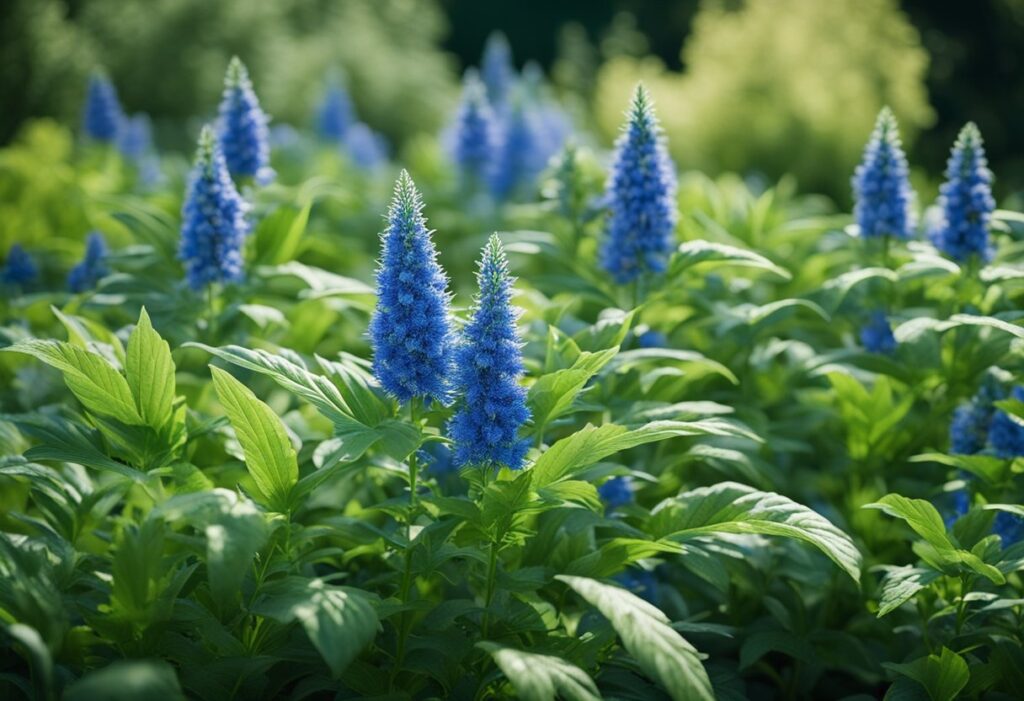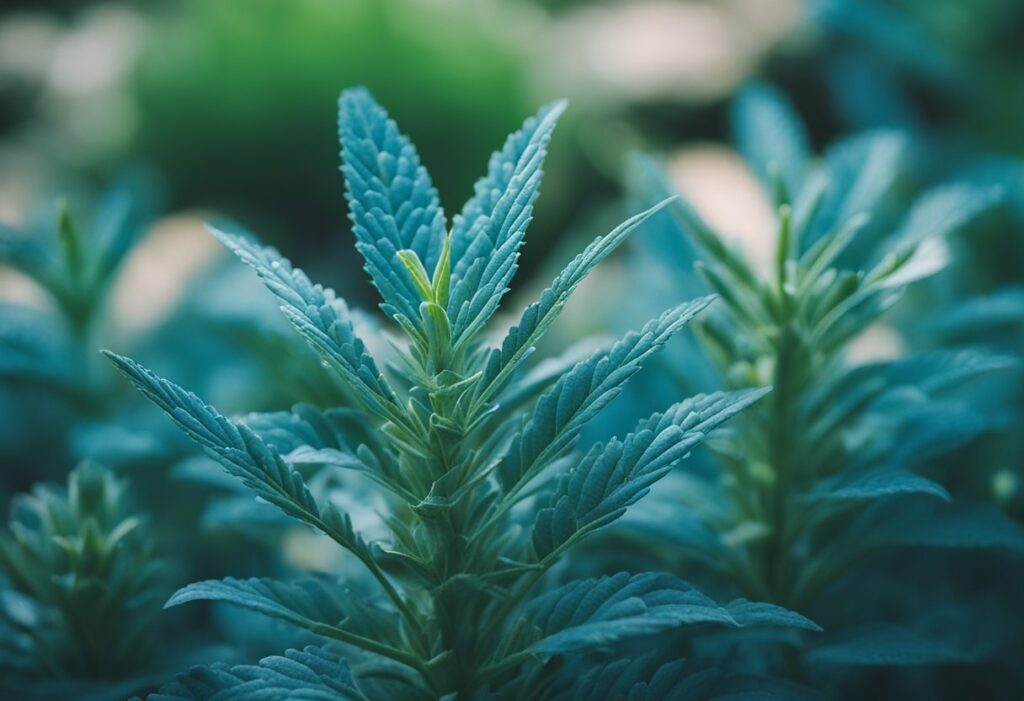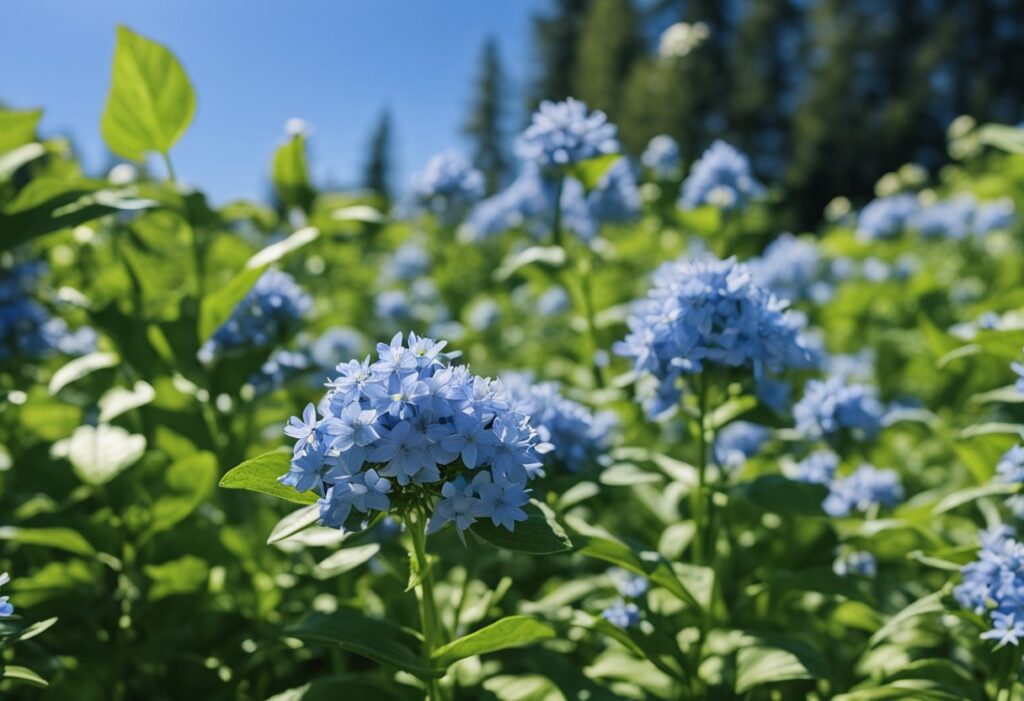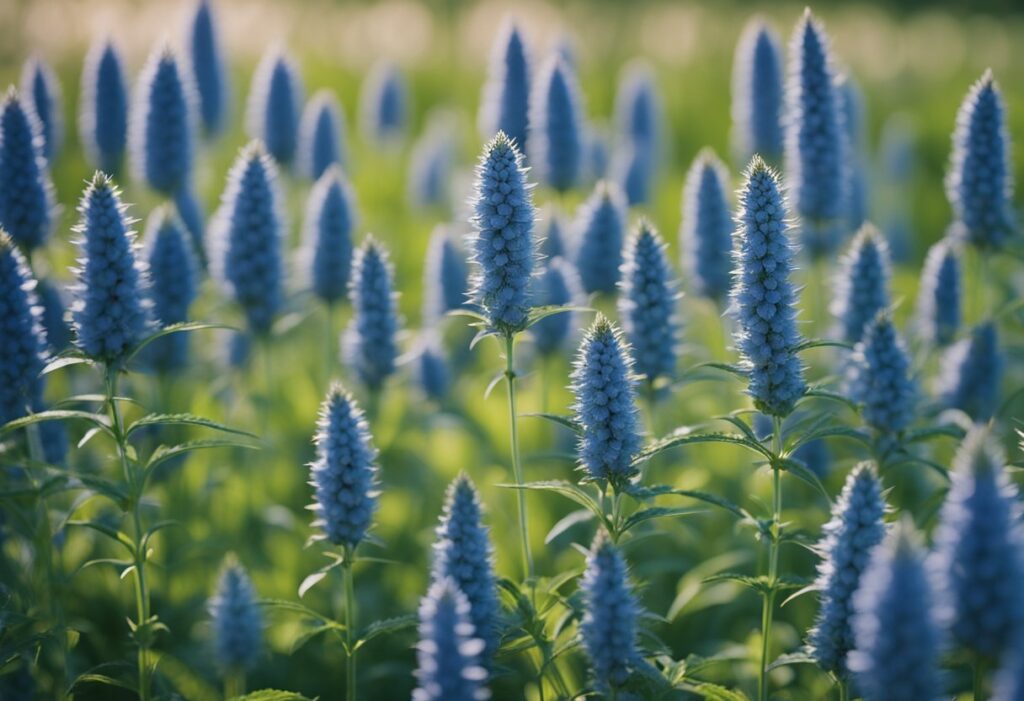
In this section, you’ll discover the rich heritage of Blue Dream seeds, learn about the climate they thrive in, and understand seedling care to ensure a robust vegetative phase.
Blue Dream is a sativa-dominant hybrid strain combining the best of both worlds: the calming, therapeutic effects from its indica side, thanks to the Blueberry lineage, and the invigorating, euphoric experience from its Haze genetics. This blend has cemented Blue Dream’s place as a revered variety in the cannabis community, offering a quintessential balance that leans toward sativa qualities.
Your Blue Dream seeds will flourish in Canada when provided an environment that mirrors their preferred Mediterranean climate. Aim for temperatures between 70-80°F (21-27°C) to mimic this ideal growing condition. Humidity levels should be moderate, maintaining a range of 60-70% for optimal growth. It’s important to note that while Blue Dream can withstand cooler temperatures, consistency is key.
To set your Blue Dream seeds on a path to success, begin with proper germination techniques. Provide a warm, humid environment, avoiding direct sunlight. Once germinated, transition them to a space with gentle indirect light and introduce a more robust light source as they enter the vegetative phase. During this period, your plants demand careful attention to light cycles and nutrient intake to establish a healthy foundation for flowering.
Your approach to growing Blue Dream seeds shapes the quality and yield of your harvest. By understanding the genetics and providing the right environment and care, you can cultivate this exceptional strain successfully, even in the varied Canadian climate.

In Canadian climates, managing pests for Blue Dream plants involves proactive strategies and regulatory compliance. This section will guide you on how to protect your Blue Dream crops from common pests using advanced techniques.
Ants and aphids are common pests that can adversely affect your Blue Dream plants. To preemptively tackle these nuisances, adopt integrated pest management (IPM) practices:
Preventative measures are your first line of defense, reducing the need for reactive tactics that may harm your plants or the environment.
Opt for natural pest control methods to maintain a healthy ecosystem around your Blue Dream plants. Consider the following:
Regular application of these natural solutions can protect your garden without the harsh effects that chemicals may have on beneficial organisms.
In circumstances where natural pest control is not enough, chemical pesticides may be utilized. It is crucial to comprehend and follow Health Canada‘s regulations:
By using advanced pest management techniques, your Blue Dream plants can thrive free from the damage caused by pests. Stay compliant with Canadian regulations to ensure that your pest control methods are effective and safe for both your plants and the environment.

When growing Blue Dream seeds, it’s crucial to focus on precise temperature and humidity control to unleash your plant’s full flowering potential and ensure a high-quality harvest.
To encourage optimal flowering in your Blue Dream plants, you want to maintain the temperature within the range of 75-80°F (24-27°C) during the day. At night, a slight drop of 10-15 degrees helps mimic natural conditions. Humidity plays a pivotal role as well; aim to gradually decrease the humidity from 60-70% at the beginning of flowering to 30-40% as the flowering cycle progresses. This helps promote robust bud development and enhances flavor, aroma, and trichome production.
Harvest time is key in determining the flavor, aroma, THC content, and overall quality of your yield. You’ll know it’s time to harvest when the trichomes display a cloudy or amber hue and the pistils have darkened and curled. Farmers Lab Seeds suggest using a magnifying glass or jeweler’s loupe to inspect trichomes closely. Then, with clean and sharp tools, cut the plants at the stem, being careful not to handle the trichomes too much to preserve their integrity.
After harvesting, drying and curing are essential for enhancing the terpene profile and overall experience of your Blue Dream cannabis. Dry the buds by hanging them upside down in a controlled environment, at a temperature of around 70°F (21°C) with humidity levels between 45-55% for approximately 7-10 days or until the stems snap, not bend. Once dried, cure the buds in airtight containers, opening them daily to let fresh air in and to prevent mold. Continue this for two to four weeks. Proper curing improves flavor, aroma, and THC content, while correct storage preserves the quality of your harvest.

Cultivating Blue Dream strains requires precision in nutrition, soil management, and plant training techniques. Well-managed factors directly influence the plant’s health and yield, ensuring a heavy, quality harvest.
Soil is your plant’s foundation. For optimal Blue Dream health, use a soil mix rich in organic matter that provides a balanced pH for cannabis, ideally between 6.0 to 7.0. Your Blue Dream’s nutrition hinges on the careful balance of nutrients. A blend offering Nitrogen (N), Phosphorus (P), and Potassium (K), commonly known as N-P-K, in addition to essential microelements, should be provided throughout the growing cycle.
Here’s a quick guide on nutrient balance:
Health Canada emphasizes the importance of adhering to guidelines for cannabis cultivation, which include safe and appropriate use of fertilizers and nutrients. Always follow Health Canada’s recommendations to ensure you’re within legal and safety boundaries.
Implement training techniques to maximize your Blue Dream yield. Techniques such as Low-Stress Training (LST) gently bend and tie down branches, encouraging horizontal growth and more even light distribution. This method causes minimal stress to the plant while promoting a fuller canopy.
Topping is another valuable technique where you cut the tip of the main stem to encourage lateral growth. This results in more colas and potentially heavier yields. Aim to top your plants after they’ve developed 4-5 nodes for best results.
By combining good soil management with effective training techniques, you not only boost your plant’s happiness and health but also lay the groundwork for those coveted heavy yields. Happy growing!
In this section, you’ll discover answers to common concerns about growing Blue Dream cannabis in Canada, with a focus on pest management strategies tailored to this region.
To effectively manage pests for your Blue Dream cannabis, integrate a combination of monitoring techniques and preemptive practices. Regularly inspect your plants for signs of pests and apply appropriate natural or chemical remedies as needed.
To prevent pests, ensure your grow space is clean and properly sanitized. Use high-quality seeds from trusted sources like Farmers Lab Seeds. They help reduce the risk of pests carried by low-quality seeds.
Maintain a balanced ecosystem in your garden, allowing natural predators to thrive and keep harmful pests in check. Use companion planting to repel insects and apply neem oil or insecticidal soap as preventive measures.
Organic methods include introducing beneficial insects like ladybugs and using diatomaceous earth to protect your soil and plant roots from crawling insects. Organic sprays based on essential oils can also be effective.
Signs of pest infestation include visible bugs, larvae, honeydew, or damage to leaves and stems. Address infestations by removing affected parts and applying targeted treatments for the specific pests identified.
We ship and deliver world wide via USPS and various couriers.
We offer a wide range of secure and anonymous online payment options.
We care about you, our customer. Please contact us with any questions or concerns.
Find out more about the benefits of being a loyal and regular customer.
WE ARE EVERY GROWERS ONE STOP SHOP TO ACQUIRE PREMIUM CANNABIS SEEDS FOR SALE IN THE USA, CANADA AND AUSTRALIA

Farmers Lab Seeds 2024, | All Right Reserved
Seeds are sold as novelty items, souvenirs, and collectibles. They contain 0% THC. We encourage our customers to check the legislation in their Country, State, Province, and Municipality prior to purchasing items from our store. We do not provide growing information.
All seeds are sold as hemp, and lab tested under 0.3% THC. This product is not for use by or sale to persons under the age of 21. This product should be used only as directed on the label. It should not be used if you are pregnant or nursing. Consult with a physician before use if you have a serious medical condition or use prescription medications. A Doctor’s advice should be sought before using this and any supplemental dietary product. All trademarks and copyrights are property of their respective owners and are not affiliated with nor do they endorse this product.
These statements have not been evaluated by the FDA. This product is not intended to diagnose, treat, cure or prevent any disease. Individual weight loss results will vary. By using this site, you agree to follow the Privacy Policy and all Terms & Conditions printed on this site. Void Where Prohibited by Law.